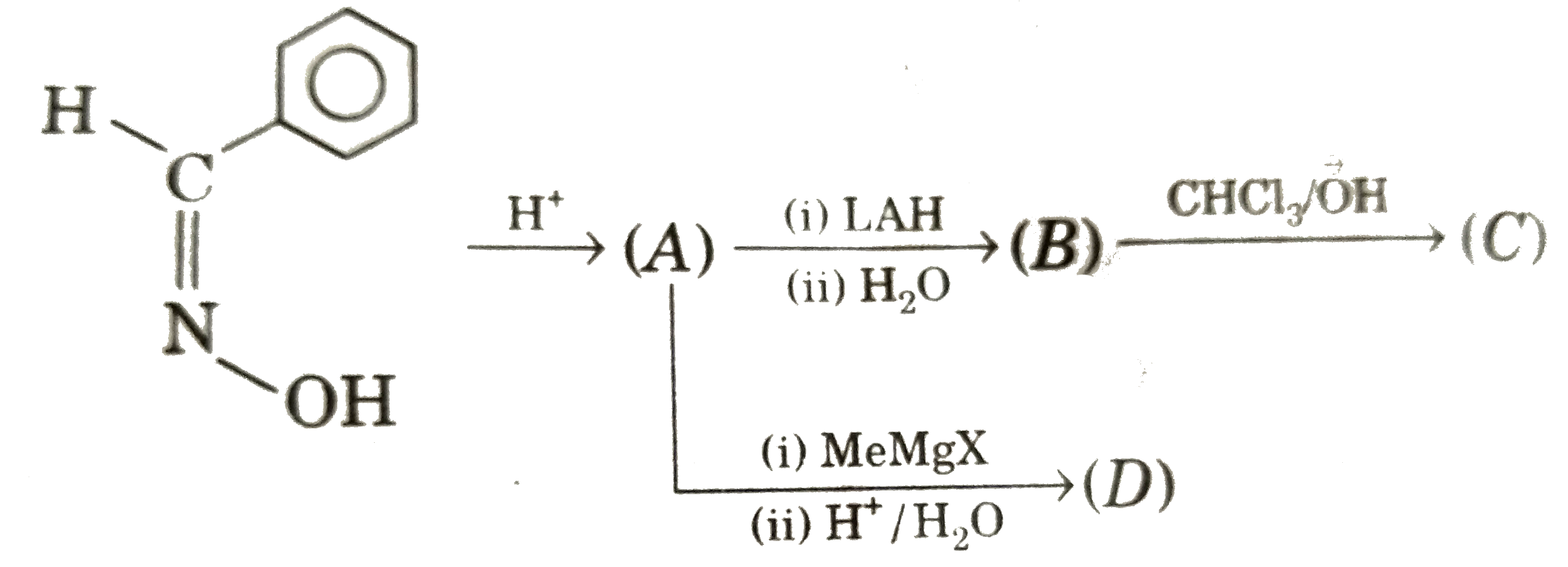Butane nitrile can be prepared by heating
propyl chloride with alc. KCN
butyl chloride with alc. KCN
propyl chloride with alc. AgCN
butyl chloride with alc. AgCN
The correct Answer is:C
To prepare butane nitrile, we can use the reaction of a suitable haloalkane with potassium cyanide (KCN). Here’s a step-by-step breakdown of the process:
Step 1: Identify the starting materials
We need a haloalkane that has four carbon atoms (butane) and potassium cyanide (KCN) as our nucleophile. The haloalkane can be 1-bromobutane (C4H9Br) or 1-chlorobutane (C4H9Cl).
Step 2: Write the reaction
The reaction involves the nucleophilic substitution of the halogen (Br or Cl) in the haloalkane by the cyanide ion (CN⁻) from KCN. The general reaction can be represented as:
R-X+KCN→R-CN+KX
Where R is the butyl group (C4H9), and X is the halogen (Br or Cl).
Step 3: Perform the reaction
When we heat the mixture of 1-bromobutane (or 1-chlorobutane) with KCN, the cyanide ion attacks the carbon atom bonded to the halogen, resulting in the formation of butane nitrile (butyronitrile) and potassium halide (KX).
For example, using 1-bromobutane:
C4H9Br+KCN→C4H9CN+KBr
Step 4: Product formation
The product formed is butane nitrile (C4H9CN), which is also known as butyronitrile. The potassium halide (KBr or KCl) is a byproduct of the reaction.
Conclusion
Thus, by heating 1-bromobutane (or 1-chlorobutane) with potassium cyanide, we can effectively prepare butane nitrile.
---
We need a haloalkane that has four carbon atoms (butane) and potassium cyanide (KCN) as our nucleophile. The haloalkane can be 1-bromobutane (C4H9Br) or 1-chlorobutane (C4H9Cl).
The reaction involves the nucleophilic substitution of the halogen (Br or Cl) in the haloalkane by the cyanide ion (CN⁻) from KCN. The general reaction can be represented as:
R-X+KCN→R-CN+KX
Where R is the butyl group (C4H9), and X is the halogen (Br or Cl).
When we heat the mixture of 1-bromobutane (or 1-chlorobutane) with KCN, the cyanide ion attacks the carbon atom bonded to the halogen, resulting in the formation of butane nitrile (butyronitrile) and potassium halide (KX).
C4H9Br+KCN→C4H9CN+KBr
The product formed is butane nitrile (C4H9CN), which is also known as butyronitrile. The potassium halide (KBr or KCl) is a byproduct of the reaction.
Thus, by heating 1-bromobutane (or 1-chlorobutane) with potassium cyanide, we can effectively prepare butane nitrile.
Topper's Solved these Questions
- HALOALKANES AND HALOARENESBOOK - MODERN PUBLICATIONCHAPTER - HALOALKANES AND HALOARENESEXERCISE - Integer Type Questions
6 Videos
- GENERAL PRINCIPLES AND PROCESSES OF ISOLATION OF ELEMENTSBOOK - MODERN PUBLICATIONCHAPTER - GENERAL PRINCIPLES AND PROCESSES OF ISOLATION OF ELEMENTSEXERCISE - COMPETION FILE (Integer Type Numerical Value Type Questions)
5 Videos
- ORGANIC COMPOUNDS CONTAINING NITROGEN BOOK - MODERN PUBLICATIONCHAPTER - ORGANIC COMPOUNDS CONTAINING NITROGEN EXERCISE - UNIT PRACTICE TEST
5 Videos
Similar Questions
Knowledge Check
Butane nitrile may be prepared by heating
Apropyl alcohol with KCNBbutyl alcohol with KCNCbutyl chloride with KCNDpropyl chloride with KCN.Butane nitrile may be prepared by heating
Apropyl alcohol with KCNBbutyl alcohol with KCNCbutyl chloride with KCNDpropyl chloride with KCN
A can be prepared byAPh−C∣∣O−Cl+NH3→BPh−C∣∣O−Cl+NH3POCl3−−−→ΔC D
D
